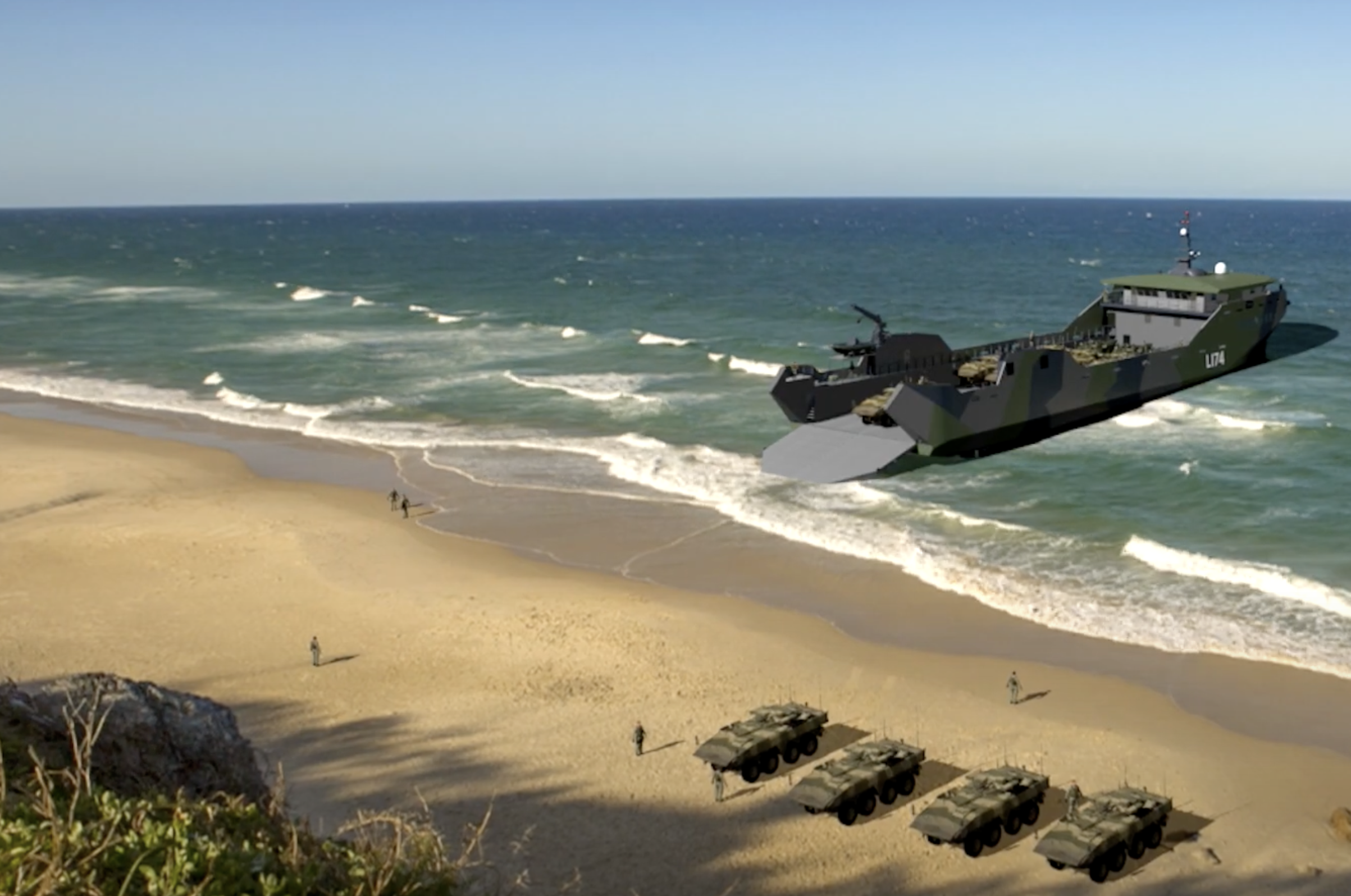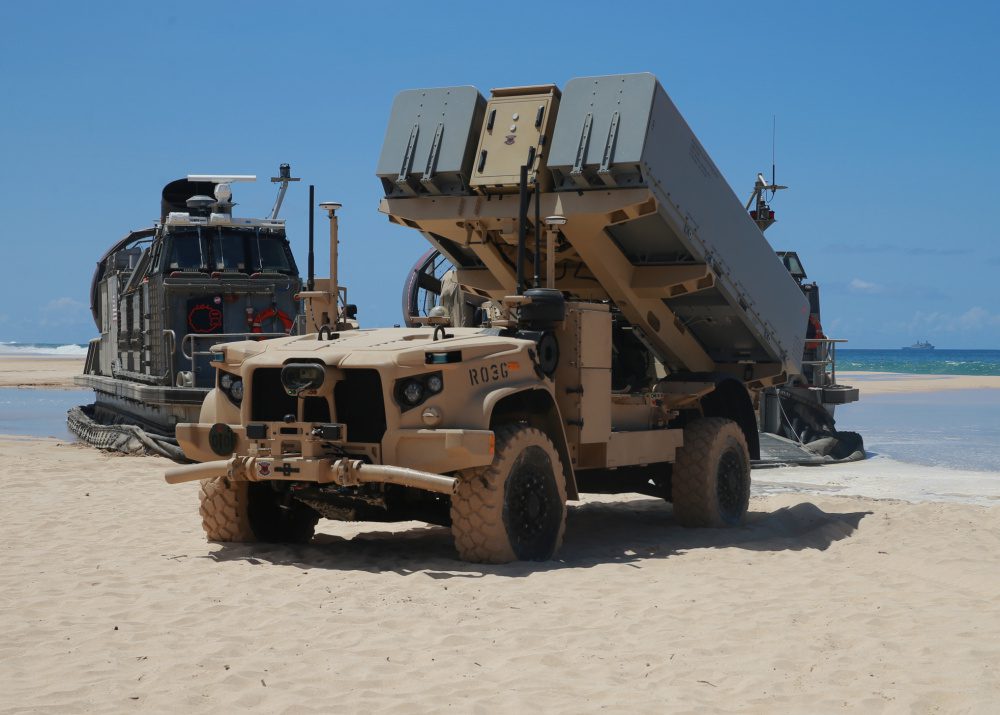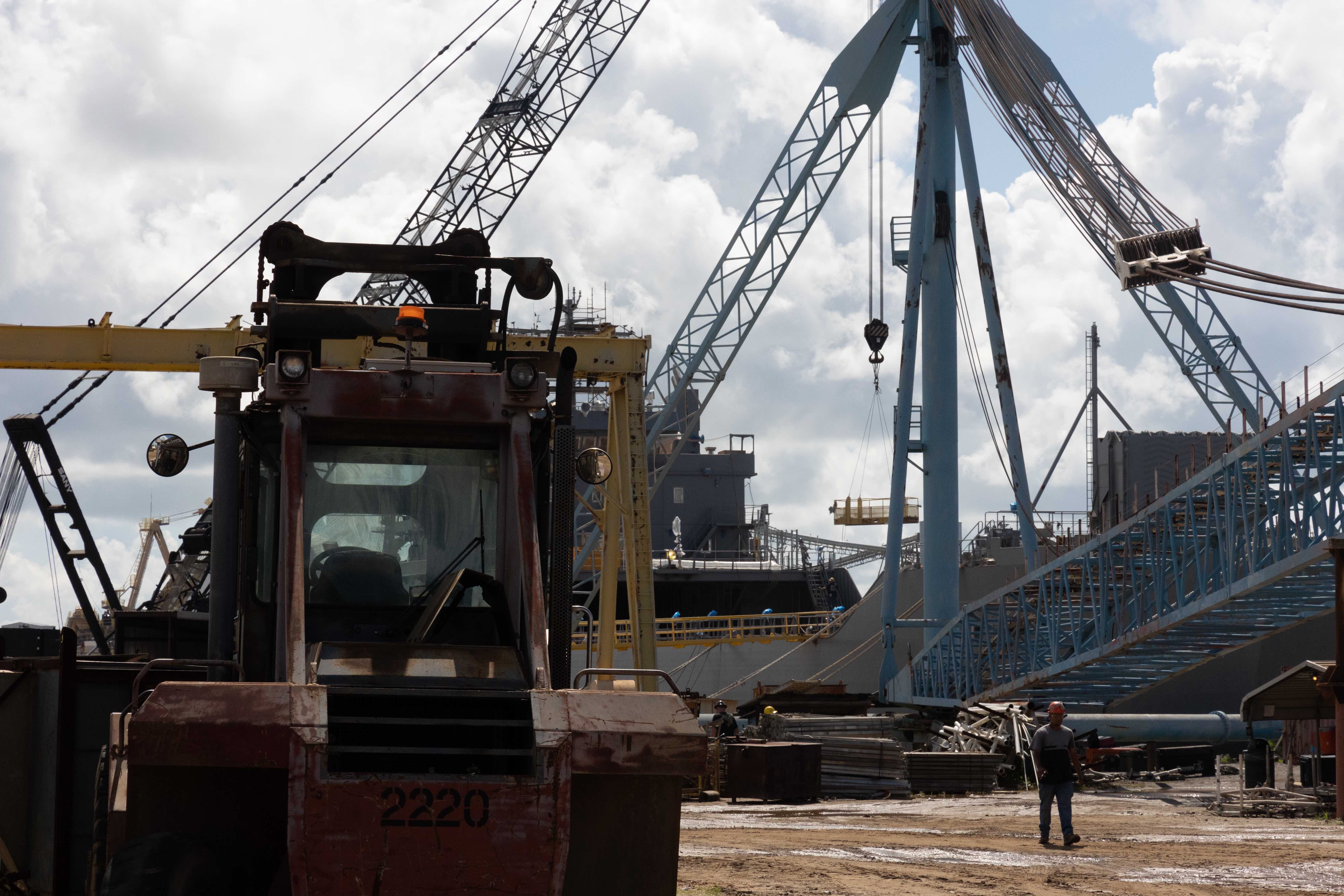
The Marine Corps and Navy remain at an impasse over the future of the Light Amphibious Warship, as skepticism about the program’s viability mounts due to the internal division, sources familiar with the program have told USNI News.
While the Marines remain committed to their plan for nearly three-dozen beachable ships that can ferry units between islands and shorelines in the Pacific, the Navy wants fewer. Chief of Naval Operations Adm. Mike Gilday’s 2022 navigation plan, unveiled in late July, calls for 18 LAWs.
“It’s obviously a big battle within the Marine Corps on where the Marine Corps’s headed and whether the Navy really supports LAW or not,” said one person familiar with the discussions on LAW.
But as recently as last week, the Marine Corps said it wants as many as 35 LAWs to achieve its vision for operations in the Indo-Pacific, which would include smaller units moving between islands and setting up ad-hoc bases from where they could fire anti-ship missiles off of the chassis of a Joint Light Tactical Vehicle.

“The Light Amphibious Warship is absolutely required – up to 35 of them. Those vessels enable the three [Marine] Littoral Regiments in the Pacific to move tonight, to immediately move to strategic chokepoints and strategic locations throughout the battlespace before the action begins in order to conduct sea denial as part of distributed maritime operations,” Assistant Commandant Gen. Eric Smith said last week at Defense News’ annual conference.
The disconnect between the two services on LAW comes after a contentious budget cycle in which the Navy and Marine Corps presented two different views on the future of larger amphibious ships. The most recent Fiscal Year 2023 submission also delayed the purchase of the first LAW out from that fiscal year to FY 2025, a move Marine Corps officials have repeatedly argued is a risky one for the service and its strategy in the Pacific.
“That risk gets passed onto combatant commanders. So when you don’t have that Light Amphibious Warship for an additional year, that risk is absorbed by the combatant commander and the execution of [operational] plans,” Smith said last week.
The division between the two services largely comes down to survivability, or what types of weapons and armors to place on a ship that would operate in the first island chain, within range of Chinese missiles.
Adding more weapons and armor to LAW makes the ship more expensive. Projections in 2020 called for each LAW to cost $100 million, a number described as unrealistic by the person familiar with program discussions. Now the Marine Corps wants the ship to cost around $150 million a piece so it can buy more of them, while the Navy is pushing for a more survivable ship that would end up costing about $300 million each.

The diverging views on costs may be driving the different numbers of LAWs the Navy and Marine Corps each say is required, said Bryan Clark, a senior fellow at the Hudson Institute.
“At the higher level you’ve got a lot of disagreement and even just outright skepticism that we’re even going to pursue the program. You’ve got a lot of people working on what should this ship look like, what capabilities should it have, how much should it cost, how many might we buy, how will we use it,” Clark told USNI News.
“At the lower levels, you’ve got a lot of activity, a lot of the normal activity. And then at the higher levels I think there’s a lot of people who just feel like this is never going to happen, that the Navy and Marine Corps are not really going to reconcile their competing visions of the program and the financial constraints on the shipbuilding budget are going to keep it from ever achieving launch,” he continued.
Work on the program continues with a requirements evaluation team. The Navy last year issued five companies – Fincantieri, Austal USA, Halter Marine, Bollinger and TAI Engineers – concept design contracts. Austal USA has published a rendering of its LAW design and Halter Marine already builds LSTs – or Landing Ship, Tanks – which are beachable and can carry Marines and equipment.
Part of the debate over the survivability and affordability of LAW may have to do with concerns over past troubled programs like the Littoral Combat Ship, which was not designed to operate in highly contested environments.
“It’s just two competing visions for what that ship does and I think the Navy is unlikely to budge on it because when it comes down to it, they’re responsible for the ship,” Clark said of LAW. “And they’ve been burned before with LCS when they tried to build a ship that was less survivable than its predecessors.”
Dakota Wood, a senior fellow at the Heritage Foundation and a retired Marine, said the survivability and affordability questions may show different risk assessments between the two services.
“It would reveal the two different perspectives on risk. You put a Marine unit on the ground, they have to engage with an enemy in close combat. I mean, you just have to do that. And so there is a service culture that says we’re going to assess the risk. We’re going to do everything we can to mitigate that risk – to lessen it – but you cannot eliminate it and it just comes with the territory of ground combat that you are going to lose people,” Wood said.
“On the Navy side, they have a relatively small number of ships – and relative meaning relative to task, the size of the world, how many ships you have in the water and all that stuff – so each one of those things represents a fairly significant percentage of naval power,” he continued. “You lose a ship, it’s a billion dollar plus investment, all the sailors aboard that ship. And so the Navy hasn’t had to operate truly in a threat environment for a very long time.”
While the services work out their differences over LAW, the Marine Corps is using a leased stern landing vessel to experiment with how it could use the platform. Smith said the Marine Corps is leasing one and has a contract that could increase that number to two or three vessels.

“What we expect from them is how’s the load out? What is your ability to move from point A to Point B? What is your ability to hide yourself electromagnetically and physically? How quickly can you onload and offload?” Smith proposed as questions to ask the Marines experimenting with the leased stern landing vessel. “What do you do to connect fuel when you need fuel from a different source – KC-130 putting fuel in? What did you forget to bring with you? What did your supply chain look like? And can you use that vessel to both support you for organic mobility and can it be used for periods of time to support the joint force logistically?”
The Navy has also pitched the LCS, which has frequently deployed to the Western Pacific, as an option to move Marines around the region to conduct Expeditionary Advanced Base Operations. Clark said the Expeditionary Fast Transport, or EPF, the Landing Craft Utility and used Army watercraft could also fulfill some of the missions the Marine Corps envisions for LAW.
“You’re already hearing out of III [Marine Expeditionary Force] and out of [Marine Corps Combat Development Command] the fact that they’re looking at alternative platforms and theoretically this is designed to inform the lAW effort, but it might also identify ways that you would be able to do this without necessarily having the dedicated LAW” program, Clark said.





